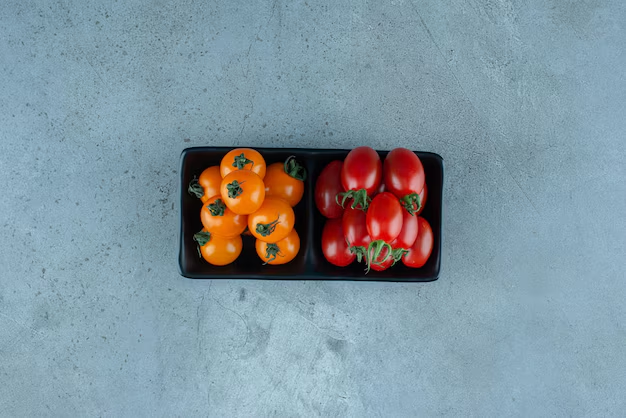🍽️ How Long Do Bell Peppers Really Last in the Refrigerator?
Bell peppers are a vibrant and versatile ingredient that can transform any meal with their crunch, color, and subtle sweetness. But like most fresh produce, they have a shelf life that, when overstayed, can lead to wasted food and money. Understanding how long bell peppers remain fresh and how to extend their lifespan is valuable for any home cook. This article delves into how long bell peppers are good when refrigerated and offers practical storage tips and insights into their shelf life.
🥗 Understanding Bell Pepper Shelf Life
Bell peppers, whether green, red, yellow, or orange, may vary slightly in sweetness and nutrient content, but they generally share a similar shelf life. Generally, the freshness of bell peppers in the refrigerator is influenced by factors such as their ripeness at the time of purchase and how well they are stored.
Key Factors Affecting Shelf Life
- Ripeness at Purchase: Firmer peppers without blemishes tend to last longer.
- Storage Conditions: Maintaining peppers at a consistent refrigerator temperature will help keep them fresh.
- Handling and Damage: Minimizing handling and avoiding damage to the peppers can prevent early spoilage.
🌡️ How Long Bell Peppers Last in the Refrigerator
Bell peppers stored in the refrigerator crisper drawer typically last:
- Fresh: About 1–2 weeks
- Cut/Sliced: Roughly 3–4 days
Fresh Bell Peppers
When kept whole, bell peppers should be stored in a plastic bag in the vegetable crisper drawer for optimal results. Peppers stored this way can retain their freshness for up to two weeks. It's important not to wash them before storing but rather just before use, as moisture can accelerate mold growth.
Cut Bell Peppers
Once you've cut a bell pepper, its shelf life shortens considerably. To maximize their freshness:
- Store, cut peppers in a sealed container or plastic bag with moist paper towels.
- Ensure moisture doesn’t accumulate inside the storage bag, as excess moisture promotes spoilage.
🧭 Extending the Shelf Life of Bell Peppers
Here are some practical tips and tricks to help you maximize the freshness of your bell peppers:
- Optimal Storage Environment:
- Store whole peppers in the refrigerator crisper drawer.
- Avoid leaving them in direct contact with other fruits and vegetables that produce ethylene gas (like apples and bananas), which can hasten ripening.
- Air Circulation:
- Allow some air circulation in the storage bag by not tightly sealing it, reducing moisture build-up.
- Regular Checks:
- Regularly inspect peppers for signs of spoilage such as wrinkles or discoloration and remove affected pieces to protect others.
- Freezing for Long-Term Storage:
- If you anticipate not using fresh bell peppers shortly, consider freezing them. Simply wash, core, and slice peppers before laying them flat on a tray to freeze before transferring them to airtight bags or containers for longer storage.
🍴 What to Do with Overripe or Aging Peppers
Even if your bell peppers have reached the later stages of freshness, they can still be used effectively:
- Roasting: Aging peppers can be roasted to enhance their sweetness, then blended into soups or sauces.
- Stuffed Peppers: Use older peppers as vessels for stuffed dishes, where any minor textural degradation is less noticeable.
- Pickling or Fermenting: These processes can preserve not just the flavor of the peppers, but in some cases, their nutrients as well.
🔍 Identifying Spoiled Bell Peppers
It's vital to recognize when bell peppers have expired to avoid potential foodborne illnesses:
- Visual decay: Look for signs like excessive wrinkling, noticeable mold, or dark spots.
- Odor: A sour smell can accompany spoilage, signaling it's time to discard.
- Texture: Squishy or slimy textures suggest the pepper is no longer fresh.
🍽️ Utilizing Different Types of Bell Peppers
Each color of bell pepper has its unique characteristics and potential uses:
- Green Bell Peppers: Slightly bitter, great for cooking in dishes with robust flavors.
- Red Bell Peppers: Sweet and full of vitamin C, these are perfect for raw applications or roasting.
- Yellow and Orange Bell Peppers: Milder than red with a sweet essence, they work well in fresh eating and salads.
🌈 Incorporating Bell Peppers Into Your Diet
Bell peppers are not just versatile in shelf life management but also in meal preparations. Here are some ideas:
Breakfast
- Bell Pepper Omelet: Add diced bell peppers to your eggs for color and crunch.
- Frittata: Incorporate multi-colored peppers for a nutritionally balanced morning meal.
Lunch
- Salads: Slice fresh bell peppers to add crispness and vitamins.
- Sandwiches and Wraps: Colorful pepper strips complement textures and flavors beautifully.
Dinner
- Stir-Fries: Quick-cook bell pepper strips with a protein and sauce for a nutritious meal.
- Pasta Dishes: Incorporate sautéed bell peppers into pasta for a nutritious and vibrant dish.
✨ Quick Recap: Ensuring Your Peppers Stay Fresh
Here’s a handy checklist to maximize your bell pepper's shelf life:
- 🥶 Storage: Keep whole bell peppers in the refrigerator.
- ❌ No Moisture: Ensure peppers are dry before storing.
- 🔪 Cut Wisely: Use sealed containers for cut peppers.
- 🕯️ Freezing: Freeze if storing longer.
- 🌶️ Use Quickly: Aim to consume cut peppers within a few days.
Understanding how to extend the freshness of bell peppers is not only beneficial for adding delicious meals to your diet but also for reducing food waste and saving money. By following these storage and preparation strategies, you can ensure that your bell peppers, a nutrient-rich kitchen staple, remain in pristine condition longer, allowing you to enjoy their vibrant flavor and health benefits to the fullest.
